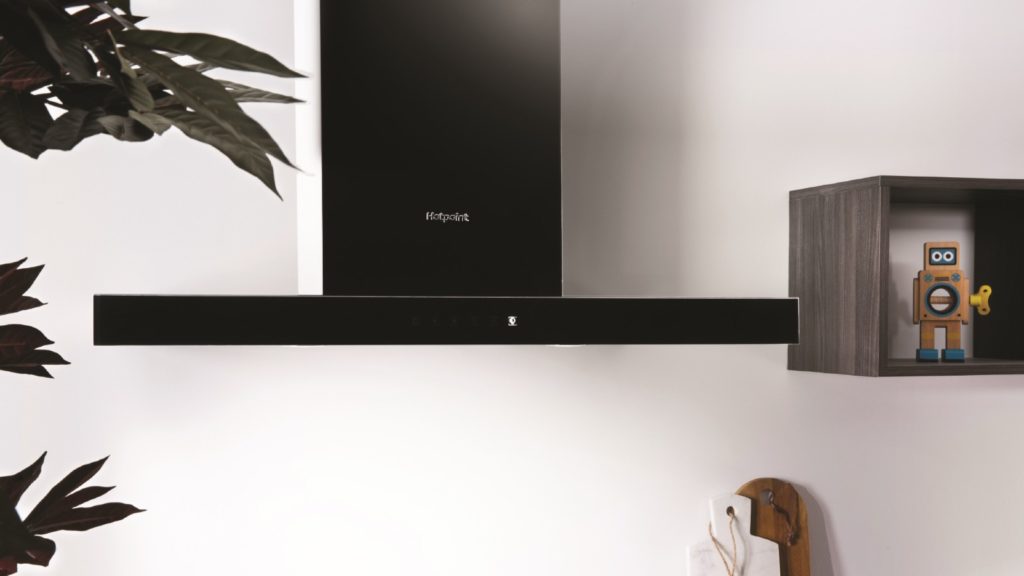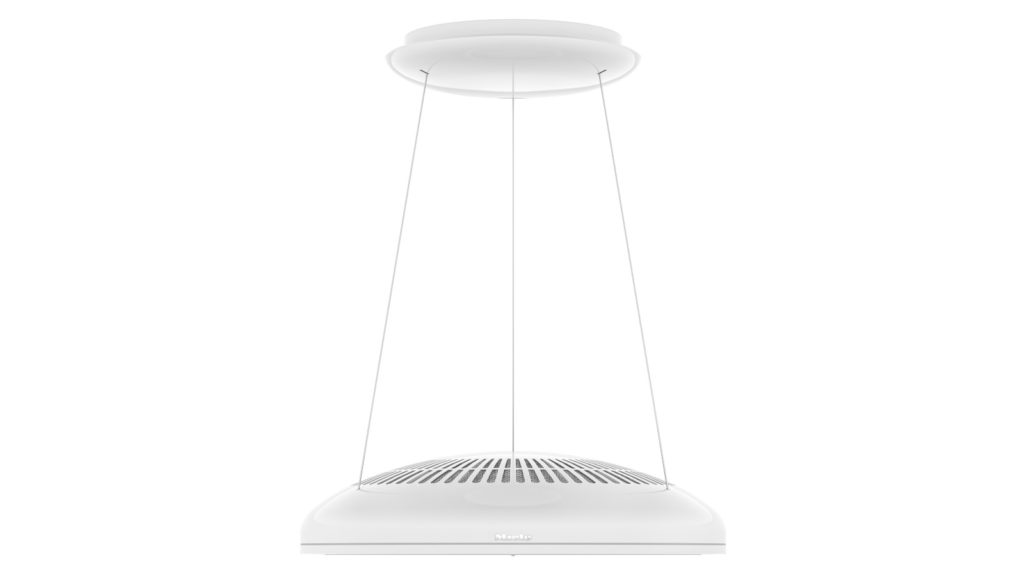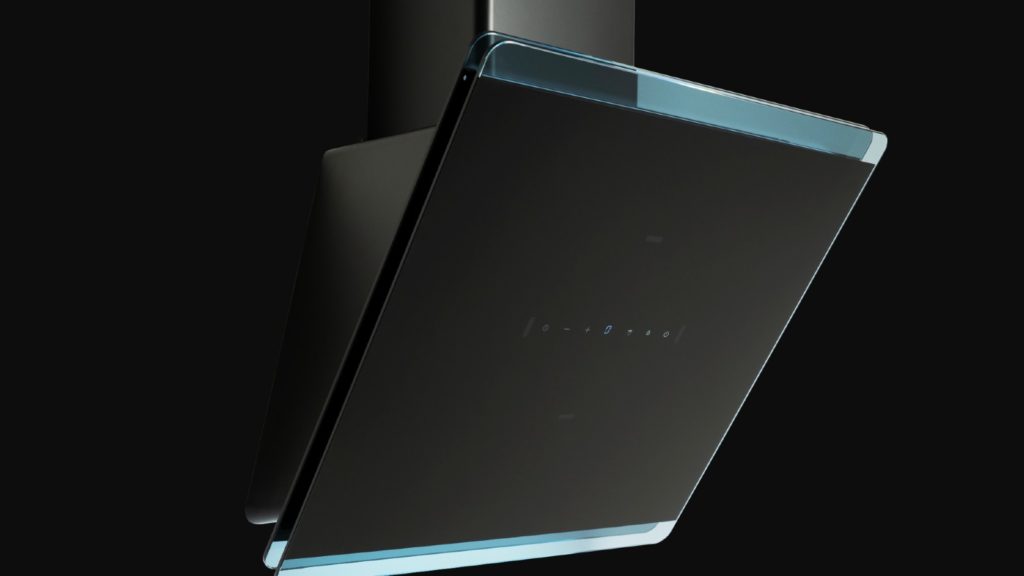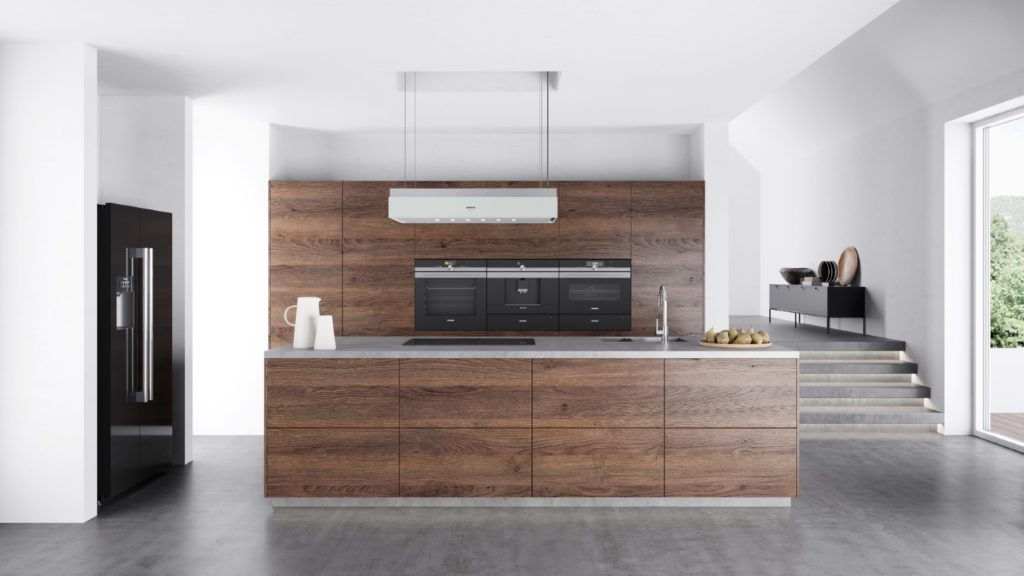We take a deep dive into how consumer focus on health and hygiene sees cooker hoods evolving into air purification systems
With health and hygiene at the forefront of consumers’ minds in the home, it’s perhaps unsurprising the focus of extraction is turning its attention to air purification.

The 900mm chimney box hood (PHBS9.8CLTDK) from Hotpoint boasts 360° Odour Removal Tech, four speeds and a boost setting. It boasts three stainless steel grease filters and Silence Control to manage the noise level
Hotpoint brand manager Kimberley Garner reports: “Recent research has found that with health rising to the top of consumers’ priorities as a result of the COVID-19 pandemic, consumers are considering the impact that their home has one their personal health and wellbeing.
Sponsored Video
“With this, air quality is an aspect of the healthy home that is moving up the list of consumers’ priorities.”
And it’s no longer enough to remove cooking odours from the air but grease, moisture and, in some cases, even allergens too.
Air purification
BSH is among the appliance manufacturers leading the way creating kitchen extraction that improves air quality.

The Franke Maris 2.0 wall mounted cooker hood by Franke offers a 24-hour ventilation option which automatically activates for 10 minutes every hour to keep the air fresh. Available in Black (pictured) or Soft Grey
Product manager ventilation at BSH Home Appliance Adam Norris explains: “Air quality is certainly something we’re focusing on, building features and benefits into extractors that are helping towards air quality management and improving air quality in the home.”
He points to its CleanAir Plus filter which removes pollen from recirculating air and an interval mode to freshen the air in a room.
Group managing director of Westin Ian Sheppard says he has noticed a demand for air purification in his company’s extraction, adding: “We have seen a large increase in sales of one hood in particular, the Stratus 360 ceiling extractor.
“This is a recirculating, environmental solution that not only neutralises odours and fumes in the air, but also targets airborne bacteria and pollutants.”
Recirculation hoods
While Ian Sheppard says ducting externally is always the most effective option for extraction, he points out “filters and especially recirculation technology has improved massively over the years.”

The Stratus Mono, by Westin, has a toughened glass single sheet outer body with recessed dimmable LED lighting behind. The central panel descends when the hood is activated and ascends when deactivated creating a flush surface
Triple stainless steel grease filters have been joined by carbon and even plasma technology in cooker hoods to purify air.
Managing director of Kuppersbusch Sales UK Bodie Kelay says: “Our premium extractors portfolio offers the option to add a self-cleaning air filter with the latest plasma technology. “PlasmaMade” ensure all cooking odours, bacteria, allergens are removed from the air. The filter is completely natural and doesn’t require changing.”
Sheppard comments: “The work being done with the UV Light/plasma technology is interesting and undoubtedly more effective that traditional recirculation.
“We have seen a definite increase in standard and bespoke hoods including this particular technology over the past year.”
Its bespoke service means the company can offer this in most types of extraction.
However, Sheppard adds extraction manufacturers are now looking at implementing this technology into a wider range of standard, off-the-shelf hoods, Westin included.
Quieter operation
Manufacturers are also looking at improving the quality of the air by reducing the noise of extraction.

The Miele Generation 7000 DA7078 Aura 3.0 is recirculation cooker hood. It has a 10-layer stainless steel filter and Con@ctivity 3.0 technology, so can work in unison with a compatible Miele induction hob
Kimberley Garner of Hotpoint comments: “The desire for quiet appliances has been enhances with many more consumers now working from home, with recent insights showing a 28% increase in consumers’ paying attention to noise.”
Ian Sheppard offers the advice on how to reduce noise pollution from extraction: “One solution is to move the motor further down the duct run, either inline or externally. This can take the bulk of the noise away from the immediate kitchen area without compromising on power.”
Touch-free controls
However, it’s not simply how extraction works but how the hood is operated, which can enhance hygiene in the kitchen.

Controllable by the wave of a hand, the CDA EXG60 and EXG90 models measure 600mm and 900mm respectively. The four-speed extractor has a boost setting and washable grease filters
And most recently the focus has been on touch-free, such as gesture control hoods, as consumer marketing manager at CDA Carrie Bell explains: “Gesture control means there is no need to touch the extractor if you have greasy or floury hands as well as the obvious hygiene benefits that we have all become so familiar with over the last year.”
This joins the WiFi-enabled hob and hood pairing, automatically allowing the hob to sense and then govern the operation of the hood. “This is great for ceiling hoods as well, as you don’t need to find the remote control”, explains Adam Norris of BSH Home Appliances.
Industry experts also point to the growth of voice activated appliances for the ultimately touch-free controls.
Adam Norris says: “You can also use your voice to control the hood via Amazon Alexa or Google Assistant, simply telling your assistant to turn up the power on the hood.”
And product manager at Miele Cem Lal agrees: “Due to the rising popularity of Smart home assistants such as Amazon’s Alexa, there will be an increased demand for extractors that can be voice controlled or operated via a smartphone.”
Out of sight
Certainly, there’s a lot more going on under the surface of cooker hoods that reach the eye. And while extraction is not out of mind, experts agree it should be kept out of sight, blending into its surroundings – whether its ceiling, downdraft or venting induction hobs.

The Siemens VarioLift studioline ceiling hood measures 1050mm and can be lowered to the desired height and moved back when not in use. It can be operated from the hob or by voice and automatically monitors steam and odours and adjusts the extractor
“Gone are the days when the only finish options are either stainless steel, white or black. Extraction now needs to be as aesthetically versatile as a kitchen designer’s imagination”, says Ian Sheppard.
But whatever style of cooker hoods are popular with clients, there will be a laser focus on health and hygiene in extraction, as he reminds designers: “Expect to see more recirculation technology incorporating effective air purification.”



